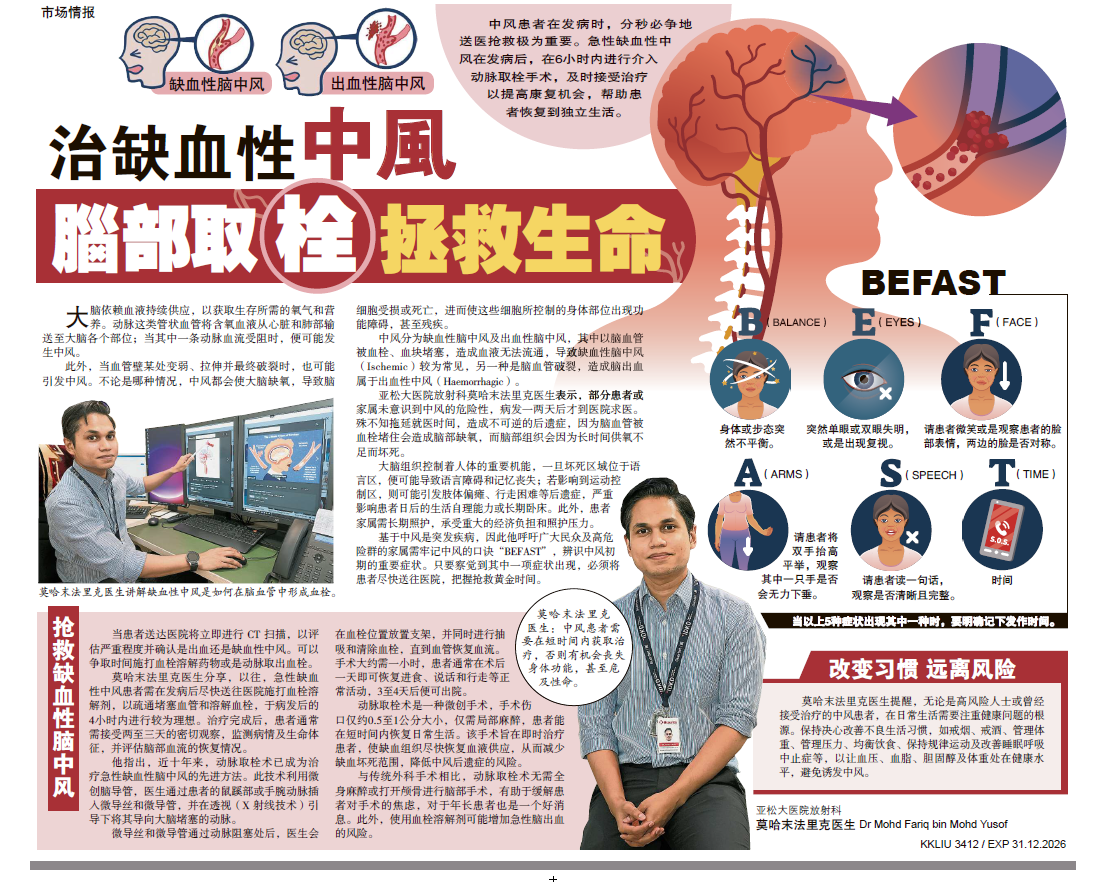“Doctor, I went to bed last night, and when I woke up this morning I had lost the vision in my right eye completely!”
We Malaysians aim to achieve Vision 2020 for our country. Sad to say, however, we are not in the least interested in having 20/20 visual acuity. Time and again, local ophthalmologists have tried educating the public about two irreversible causes of blindness that can be prevented by screening, but to no avail.
What are the two conditions that cause devastating and irreversible blindness?
Diabetic Retinopathy
What is it?
The retina is the light sensitive tissue at the back of the eye that triggers nerve impulses. These impulses pass through the optic nerve to the brain and enable a person to see. Diabetic retinopathy is damage to the retina caused by poorly-controlled diabetes. It is prevalent in all diabetics after a long duration (5 – 10 years) of the disease.
How does it develop?
Chronic high blood sugar causes a cascade of events in the retina. It damages the blood vessel wall, causing a leakage of fluid and fat in the early stages. With further progression of the disease and lack of treatment, the blood vessels in the retina become blocked and starve the retina of oxygen and nutrients. As a result of this, new abnormal blood vessels develop. Bleeding from these abnormal vessels causes a sudden onset of blindness.
Who is at risk?
The risk increases the longer a person has diabetes. In the last five years, approximately 50% of Malaysians diagnosed with diabetes suffer from some stage of diabetic retinopathy. Diabetic eye screening in Malaysia in 2006 revealed that 37% of patients had diabetic retinopathy and 15% had sight threatening diabetic retinopathy.
What causes diabetic retinopathy to progress faster?
Causes include poor diabetes control, smoking, lack of exercise, pregnancy, associated hypertension and diabetic kidney disease.
What are the symptoms?
Unfortunately, diabetic patients suffer from NO blurred vision until the later stages. Treatment at these stages is not as effective, or there is no treatment.
When should you consult an ophthalmologist?
All diabetics, regardless of disease duration, and even those with ‘good’ vision must have regular eye examinations to avoid going blind.
False common myths
- My diabetes is well controlled. I don’t need to see an ophthalmologist.
- My vision is good.
- I can see an optician or can change my spectacles to see well (all diabetics should undergo an eye examination before changing spectacles).
- Laser treatment is dangerous.
(Note: Laser treatment is still the gold standard for treatment. It is not a new form of treatment as it was started in the 1960s. ‘Laser’ treatments for cataracts and to correct refractive errors (to make one spectacles-free), however, is completely different and a more recent invention).
GLAUCOMA
What is glaucoma?
Glaucoma is a disease of the optic nerve. The optic nerve carries the images we see from the eye to the brain, where the image is processed. Glaucoma causes irreversible damage to the optic nerve, which then causes blind spots in our vision and eventual irreversible blindness. Increased intraocular pressure (pressure of fluid in the eye) is a recognized risk factor.
Are there different types of glaucoma?
Yes. The most common form is open angle glaucoma. There are no symptoms until late or end stage, when it is too late to regain or preserve vision.
Am I at risk of glaucoma?
Yes, if….
- you have a family history of glaucoma
- you are over 45 years
- you have diabetes
- you have a history of previous eye injury
- you use steroids (in the form of tablets or eye drops)
Other risk factors include being short-sighted or suffering from hypertension.
When should I see an ophthalmologist?
All patients over the age of 40 should have an eye examination every two years.
What does an eye examination involve?
An eye examination consists of a number of steps in which your doctor examines your eyes. The first step requires the application of eye drops. This is to dilate your pupil.
How long does an examination last?
It takes up to an hour to dilate the eyes with eye drops. The subsequent examination takes fifteen minutes to half an hour.
How should you prepare for an examination?
Always bring a designated driver along to drive you home. Dilated eyes cause poor vision, which self-reverses within 5 to 8 hours.
What is the take-home message?
As I always tell my patients: your eyes are your best friends, especially as you get older. Please remember that prevention by screening is better than blindness by ignorance.











